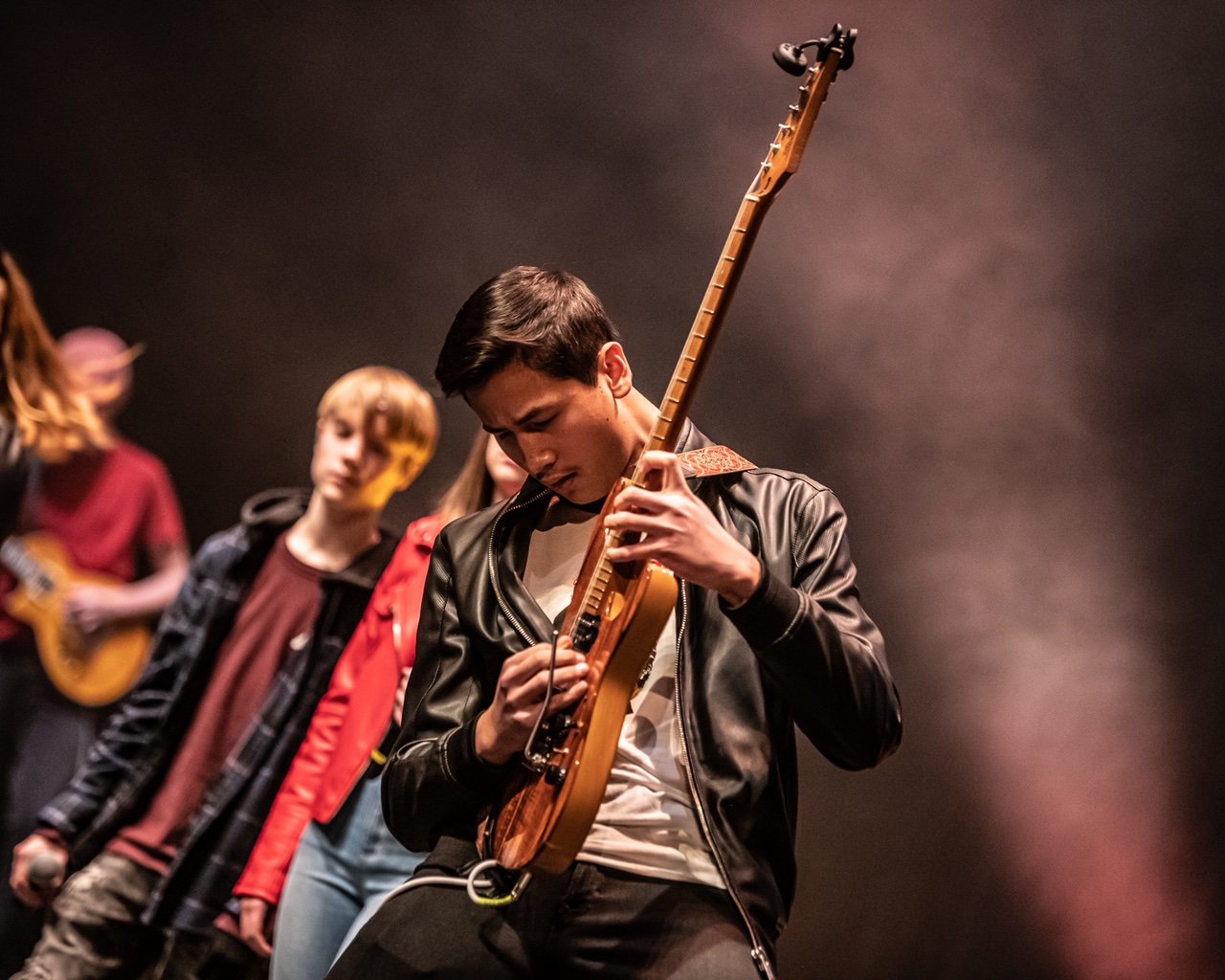Beginner’s Guide To Buying Your First Guitar
The guitar world is vast so it can be a little daunting when searching for your first axe. You might be buying one for your child and have no idea what is suitable. Let's break down the process into simple steps to make sure you’re spending your money wisely.
You’re about to buy your first guitar! Getting your hands on a new instrument is extremely exciting, and we’re here to make sure you choose one you’ll feel inspired to pick up and play as often as possible.
Steps to buying your first beginner guitar:
Choose what type of guitar you want – acoustic or electric
See what style or shape stands out to you
Set a budget
Consider trying it in person before you buy
Buy accessories e.g spare strings, guitar maintenance
Step 1: electric or acoustic?
Decide if you want an acoustic or electric guitar. Acoustics give you a sparkly, delicate sound ideal for practice and eventually songwriting. Acoustics guitar are used in all different styles of music, but most often you’ll come across them in folk, indie, rock, country and pop genres. The modern acoustic guitar shape was well-established before the arrival of the electric guitar, so visually you have a classically-styled instrument featuring a large body and soundhole.
Diving a bit deeper, you also have the choice between a nylon-stringed acoustic which is quieter and less demanding to play, or a steel-stringed acoustic that’s louder but tougher on beginner fingers
When it comes to electric guitars, there’s a massive scope in style and sound for you to explore – and it’s always expanding at a beginner level. You could go down the Hendrix route with a Stratocaster shape guitar, BB King likeness with a semi-hollow or full-on metal with a “V” shape.
There is no right or wrong way to start here. In most circumstances, electric guitars might be considered easier to play early on in your progression – but we wouldn’t recommend you let this dictate your buying decision too much. You can always change direction when you have more experience with the instrument.
Step 2: Settle on the shape and style
Pick what you think stylistically looks the best. Do some research into what your favourite guitarists use to see if you share a taste in guitars. Have a look at some more expensive guitars for inspiration.
One thing to consider is that there’s less visual variation amongst acoustics; but instead a number of body sizes which produce different sounds. Dreadnought style acoustics have an iconic look and a thick, loud tone perfect for strumming chords, but may be too large for smaller players. Parlour style guitars, on the other hand, have thinner bodies more suited to seated practice playing and children.
If you’re buying for a child, check out beginner small-scale guitars. These have shorter necks and fretboards so there’s less stretching to play notes. Some manufacturers make 3/4-sized guitars or smaller built specifically for children. The Jackson Minion series is a range of small-scale rock instruments perfectly suited for younger players.
We Recommend
1/2 Size Guitars – For kids up to age 7
3/4 Size Guitars – For kids aged 8-11
Full Size Guitars – For kids aged 12+
Step 3: Set your budget
Decide your budget. Do this now because you may be tempted to pay that little bit extra for a certain shape or colour that really takes your fancy. There’s a wide array of excellent beginner guitars with fantastic build quality and comfort under £250. This is a great budget for a first guitar because if you find out it’s not the instrument for you, or you get bored, you don’t want to waste more money than needed. Start off on a lower budget and you’ll eventually want to work your way up in price with your progress and dedication.
Once you’ve narrowed down your search to a handful of choices, If you get the chance, go to a guitar shop such as Andertons *wink wink*! Ask the staff to help you out. See what takes your interest in person, feel what it’s like to sit down with a guitar and hold it as if you were to play.
Step 4: Consider trying it in person before you buy
A lot of guitars in the lower price bracket bear similar specifications, so there’s no need to focus too much on the fretboard material, or how many knobs it has, or what hardware it has. There are lots of variables in guitars so it’s important not to feel overwhelmed.
Even how the instrument sounds is not as vital as how the shape makes you feel. If it excites you to look at, you’ll be more inclined to pick it up and play.
Step 5: buy your accessories
Consider buying a starter pack. The Epiphone Les Paul pack contains a strap so you can play standing up, as well as an amplifier and cables to project the sound and plectrums to pick the strings. There are plenty of these out there for acoustics too such as the Fender CC-60s pack. Alternatively, you could buy the guitar separately and add these accessories later on. For the best bang for your buck, check out our huge range of EastCoast Starter Packs. Beyond the basics such as picks and an amp and cable for electrics, everything is optional. But we recommend getting extra strings when you eventually wear out the ones already strung on the guitar. Cleaning fluid for the neck is also a worthwhile addition to keep your guitar in top condition. If you want to get more creative after nailing the very basics of playing, a slide and capo open up even more playing possibilities.


